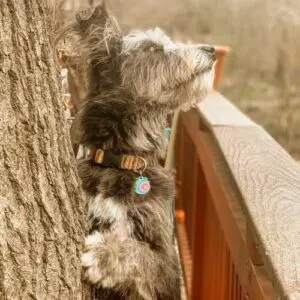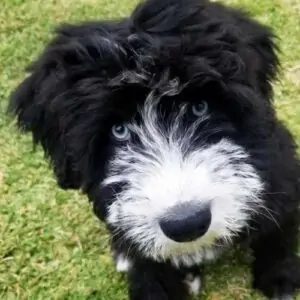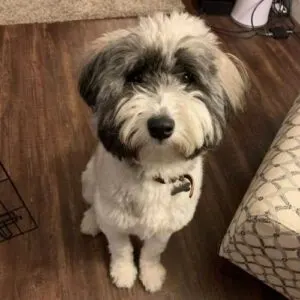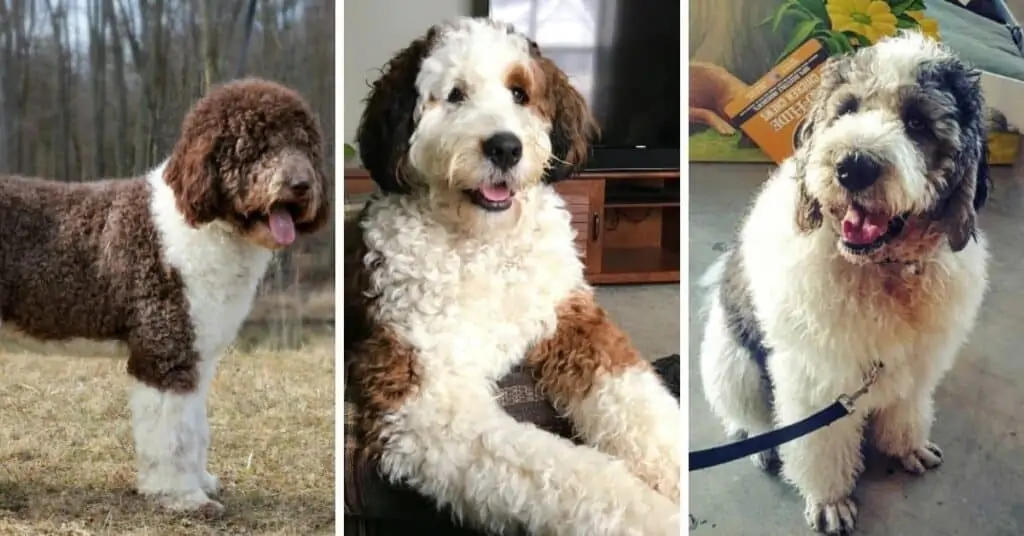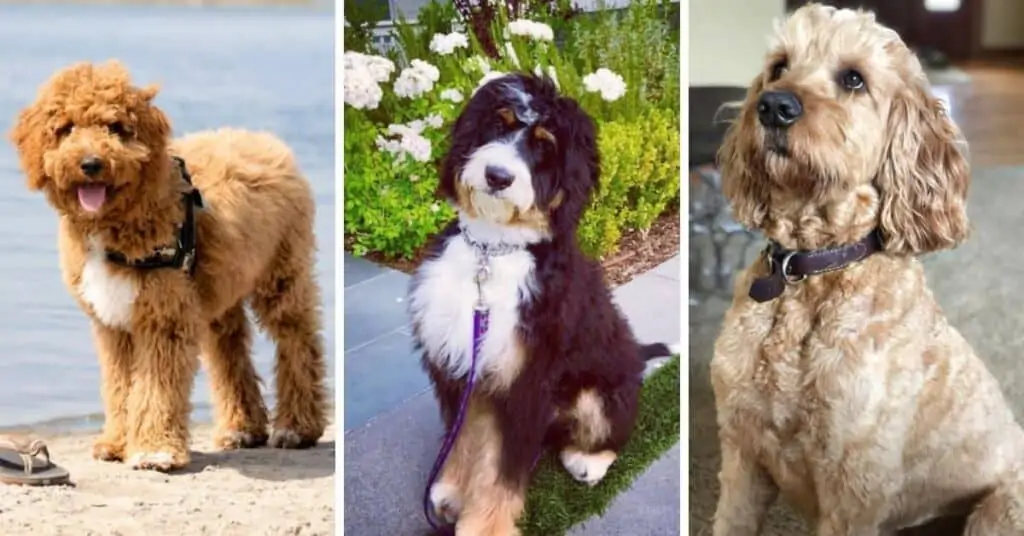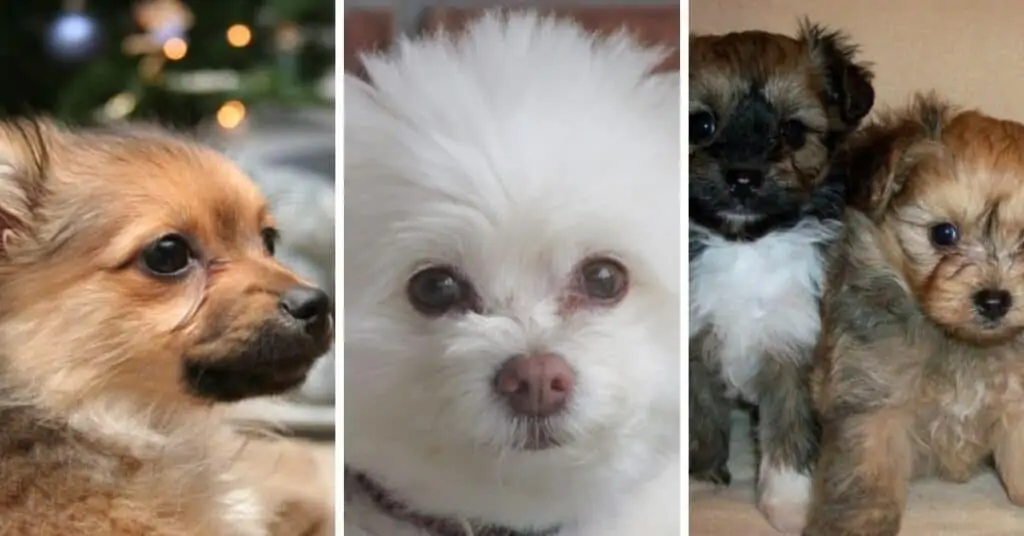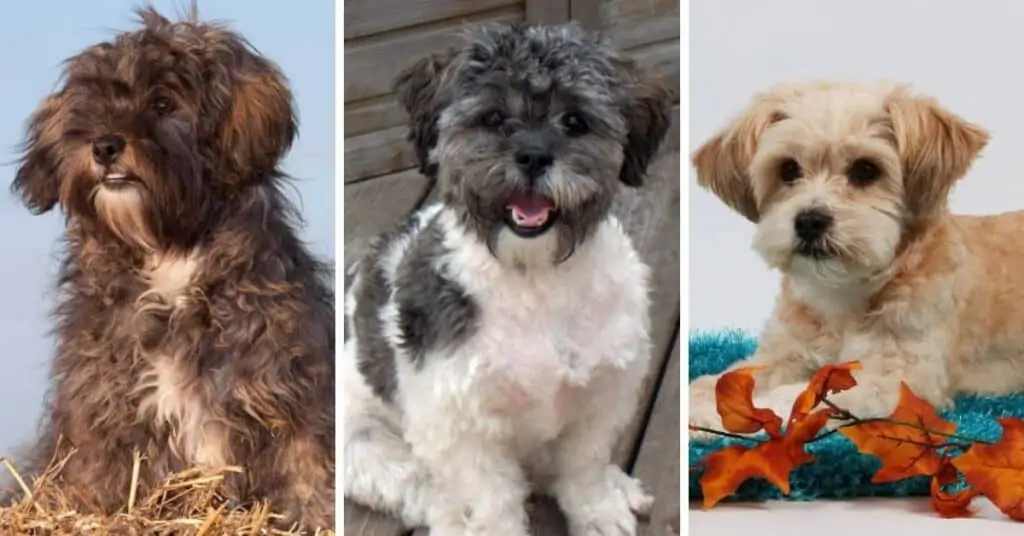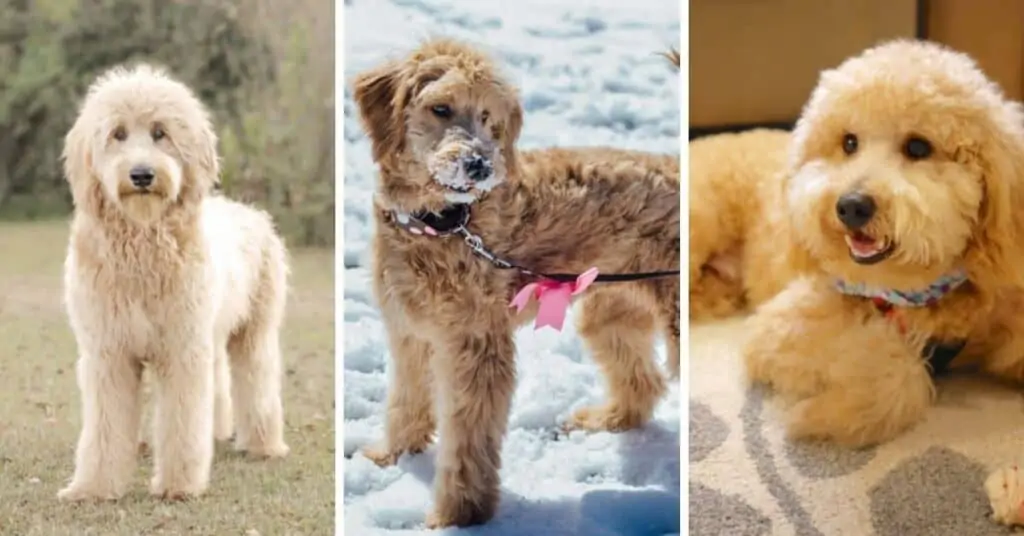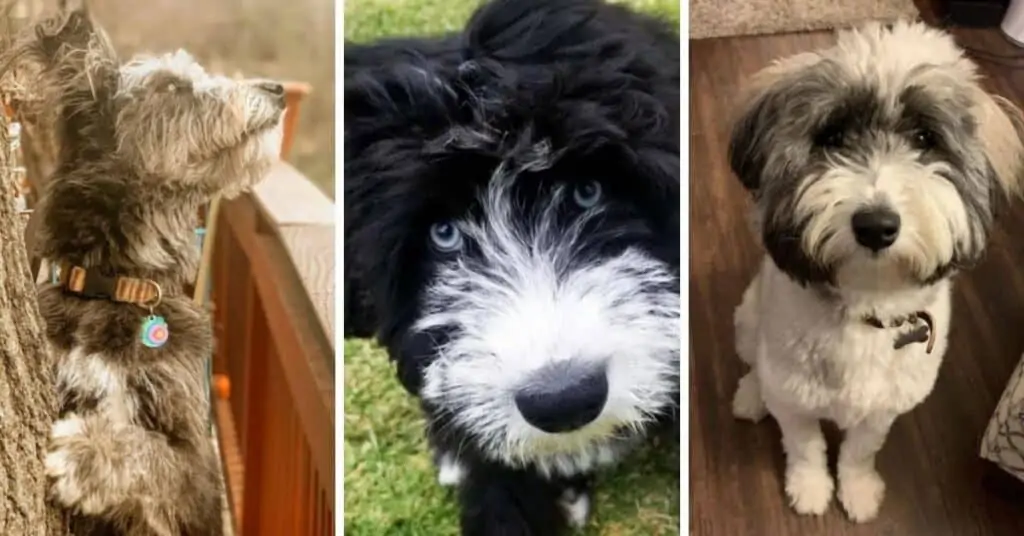
What is a Huskydoodle?
Heritage:
Siberian Husky Poodle Mix
Other Names:
Siberpoo, Husky Doodle, Poosky, Siberian Poodle, Huskypoo, Huskapoo, Siberian Husky Poodle Mix
Siberian Husky Poodle Mix Breed History
Siberian Husky Breed History:
Contrary to what you may believe based on its looks, the Siberian Husky is not a wolf or even a hybrid of a wolf. It was first bred by the Chukchi people, natives of Siberia, Russia. These hunter-gatherers relied on their dogs for work but also cherished them as part of the family. While commonplace now, it was a big deal in their culture that the dogs were permitted in the family dwelling to sleep at night.
In 1909, a Russian fur trader named William Goosak introduced the Siberian Husky to the United States in Nome, Alaska. There they were used as sled dogs and competed in the long-distance All-Alaska Sweepstakes races. They came in third place in their first race, propelling the breed to popularity for this use.
It wasn’t until the 1930s when the Siberian Husky earned its AKC recognition and began its rise as companion and family dogs as well.
Poodle Breed History:
While commonly associated with the French, the Poodle actually originated as a duck hunter in Germany over 400 years ago. In German, “pudelin” refers to the splashing in water that the dogs would do to retrieve waterfowl. The Poodle’s curly, weatherproof coat as well as its natural swimming ability and high intelligence made it an excellent retriever.
Eventually, Poodles made their way from the lake to the life of luxury as they were the breed of choice by French nobles, and eventually royalty across all of Europe. To this day, the Poodle is still the national dog of France. The entertainment industry then caught on to the Poodle’s showy looks, intelligence, and ease of trainability and gave them a prominent role in circus acts across the world.
While the Poodle started out as the “standard” variety, eventually the miniature and toy variations were bred. The Toy Poodle started in the United States in the early 20th century to be a city-dwelling companion dog. Due to the many positive personality traits and its hypoallergenic coat, Poodles are now commonly bred with a wide variety of other breeds to produce the “designer” hybrid dogs known and loved by many as “doodles.”
Huskydoodle Breed History:
While certain doodle breeds were first created with a specific purpose in mind—Labradoodles to be service animals or Sheepadoodles to be military dogs for example—this likely wasn’t the case with Huskydoodles. At the moment, there is no documented history behind this Siberian Husky Poodle mix and nobody has stepped forward to take credit for breeding the first litter.
It is likely that the intention behind creaing the Huskydoodle was to take many of the aesthetic qualities of the Siberian Husky, like its distinctive coloring and mesmerizing blue eyes, and combine it with the hypoallergenic coat of the Poodle. They likely were first intentionally bred sometime in the 1990s.
Siberian Husky Poodle Mix Appearance & Grooming
How Big Do Huskydoodles Get?
The most important factor in determining the size of a Huskydoodle is whether its Poodle parent was of standard size, miniature size, or toy size. Keep in mind that Huskydoodles are usually bred from Standard Poodles and almost never bred from Toy Poodles due to their size difference.
The average Huskydoodle will stand between 13-22 inches tall and weigh around 45-60 pounds full-grown.
Huskydoodle Dog Breed Coat & Grooming:
Breeders tend to try and have their puppies inherit the distinctive coloring of the Siberian Husky, and as such, the coat of the Huskydoodle is usually a combination of white, silver, and black. Brown, although rarer, is also an option.
How the coat’s texture ends up in this Siberian Husky Poodle mix can vary. It could be straight like the Siberian Husky or curly like the Poodle. It usually ends up as a wavy mixture that is short to medium in length. This coat requires a decent amount of maintenance—brushing everyday should be standard practice.
Are Huskydoodles Hypoallergenic?
Do Huskydoodles Shed?
Because of their Poodle heritage, a breed which is hypoallergenic, Huskydoodle puppies are often touted as also being hypoallergenic and/or non-shedding. While this can be true, it is not a guarantee at all and varies by the individual litter.
Keep in mind that some people have allergic reactions that are more sensitive to certain breeds than other breeds. However, there is no scientific evidence to support that certain breed are more or less universally hypoallergenic. It all depends on whether the particular traits in a puppy associated with being non-shedding and hypoallergenic are gotten from the poodle or Siberian Husky side of their DNA.
There are also different generations of Huskydoodle, some of which have a higher percentage of Poodle compared to Siberian Husky. This makes them more likely to be hypoallergenic. For example, a F1B Huskydoodle is more likely to be hypoallergenic than an F1 Huskydoodle because it is 75% Poodle instead of 50%.
Siberian Husky Poodle Mix Health & Wellness
Huskydoodle Dog Breed Lifespan:
A healthy and well-cared-for Huskydoodle’s life expectancy is between 12-15 years.
Huskydoodle Dog Breed Common Health Concerns:
As you would think, Huskydoodles are susceptible to the common heath issues of the Siberian Husky as well as those of the Poodle. However, being a mixed breed gives them superior genetic diversity to a purebred dog which tends to result a lower chance of them developing these inherited health issues and diseases.
Some common genetic disorders that affect the Poodle Husky Mix include Legg-Calve Perthes Disease, Gastric Dilation Volvulus, Hip Dysplasia, and Patellar Luxation.
Due to the cost of treating these common health concerns, we highly encourage all dog owners invest in pet insurance. We recommend getting a free online quote from Healthy Paws Pet Insurance.
Siberian Husky Poodle Mix Temperament & Personality
Huskydoodle Dog Breed Behavioral Traits:
Huskydoodles are incredibly loving and loyal dogs, but require a lot of care and attention for them to make a great addition to your family. They are significantly more high-maintenance in a lot of ways than other varieties of doodles. For example, they need a family where someone will be home to keep them company most of the time. Without this, they would be unhappy and could misbehave. They also need a significant amount of exercise as we’ll discuss later.
While they may be a bit needy, they are incredibly loyal to their family. They have a protective nature and as such make good guard dogs, even being known to give special attention to children and more vulnerable members of the family. As long as they are properly socialized as puppies and sufficiently exercised, they can be gentle and loving towards children and other pets alike.
While they are fairly easy to train, this breed of doodle is often easier for experienced dog owners to handle due to how much attention they demand.
Huskydoodle Dog Breed Activity Requirements:
Huskydoodles are one of the most high-energy varieties of doodle and demand a lot of exercise to be kept happy and healthy. It’s not recommended to get a Huskydoodle if you are living in an apartment as they really benefit from having a large yard to run around and play in—bonus points of you can put a dog door in your house as well!
They should be getting a minimum of an hour of exercise a day with additional playtime on top of that. Remember, it’s not only about physical exercise for this Siberian Husky Poodle mix, it’s also about mental stimulation and spending quality time with their family.
Siberian Husky Poodle Mix Pictures
